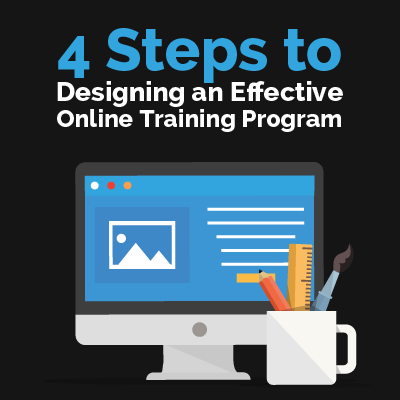When your employees have a clear understanding of policies, job functions, company culture and goals, they also have increased motivation, morale and productivity, leading to higher profits for you. Which makes those onboarding courses and other online training programs seems pretty important, huh?
Here's what you need to do to create an effective online training program
1. Gather Your Info
- Ask the right questions. This is how you'll figure out what skills you need to teach. Take the time to identify weak areas where online training would benefit your organization. Does your company need to improve hard skills, such as using the fax machine, potentially dangerous machinery or some process? For example, perhaps Trace is the brew master for a fledgling brewery. He’s ready to expand, but he needs to train some new volunteers on the bottling process. This is a fast-paced task and an extremely important step. Trace needs a training program that can instill these hard skills into his people. Or your company might be more in need of soft skills, including time management, conflict resolution or general company policies. It's up to you to determine this before you design your training program.
- Align training to real world job tasks. Now that you know what your training needs are, you can divide training into small modules that apply to specific, real world job duties.
- Check for continuity. A good training course covers all the steps to be learned in a logical order. Try to imagine you are a new employee. Would these instructions make sense to you?
2. Create Your Presentation.
- Choose an authoring tool. If your company already has existing PowerPoint presentations that you want to use, a rapid e-Learning tool will work great. If you want to design from scratch or need to create a lot of tests and quizzes, you’ll want a full-featured authoring tool like Lectora® Inspire.
- Add interaction and videos where appropriate. There’s a fine line here. You don’t want your animations to overwhelm the actual e-Learning content, but you want to make sure you’re not presenting your learners with slide after slide of static text. Yawn!
- Proofread! When you’ve been staring at the same content for a long time, reading it over and over, it’s easy to miss small typos. But even small typos can decrease a learner’s confidence in a course. Try these 6 tips for proofreading your e-Learning.
3. Arrange Practice Runs.
- Enlist beta testers. You need a small test group to act as guinea pigs. Select people you know will be honest and tell you what's wrong with your online training program. So, don't select the overeager intern who just wants to please everyone in the hopes of securing a full-time job!
4. Implement Your Online Training Program.
- Choose a robust LMS. You want an LMS that can handle multiple file types, is capable of m-Learning when you are ready for it and is SCORM-compliant. Try a free 30-day trial of CourseMill® LMS and see how its easy-to-use reporting and learning analytics can help you keep track of your e-Learning courses and learner progress.
- Get employee feedback. An online training program isn’t effective if employees don’t like the format or find it hard to use.
- Keep tabs on the training. Your training program should be continuously monitored to ensure its success. Be ready to tweak and update your e-Learning if the market changes or new technology makes your processes outdated.
Quick Tip: Keep online training modules under 60 minutes. This will make it easier for employees to schedule the e-Learning courses into their days and help prevent information overload.
Like this post? For more e-Learning and online training development tips, subscribe to the Lectora e-Learning Blog!
Originally published on August 7, 2014







